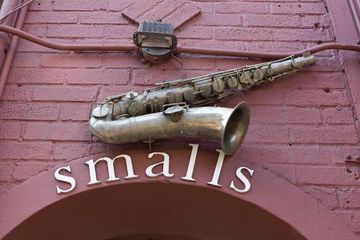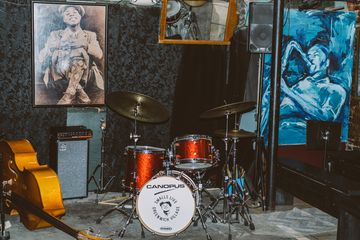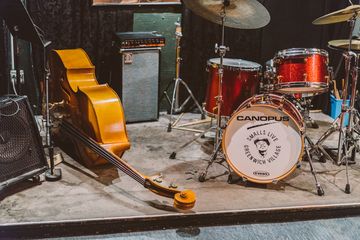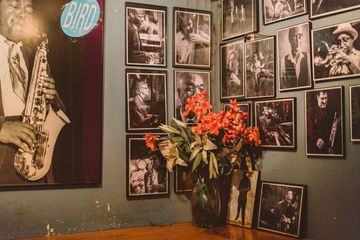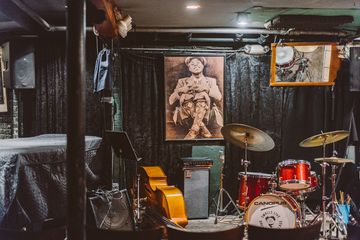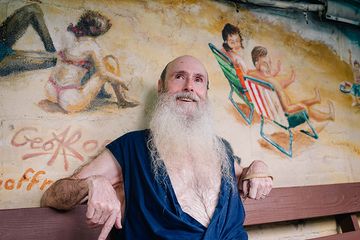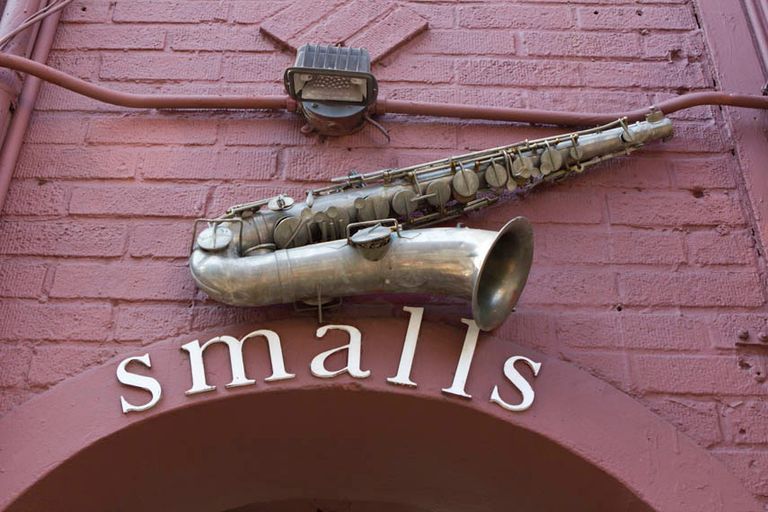
Signaled by a saxophone hanging above the door, we headed down the winding staircase into the basement of a West Village building to find Smalls Jazz Club, which has been honoring New York City’s romantic past with jazz music since its opening in 1994. Named for the Sandlot character, Smalls is an apt name for this intimate, dimly lit space with a charmingly eclectic collection of mismatched chairs and stools arranged around a tiny stage at the forefront.
Founder Mitch Borden, who owns the space with partner Spike Wilner, is quick to claim that nothing compared to early Smalls. “I never locked the door and everyone had a key anyways. There was nothing to steal down here - it was like the Little Rascals club,” he recalled. One particular memory that stood out was their opening: “Our first show was on May 20, 1994. We didn’t have a liquor license and we stayed open ‘til eight am. It was ten hours of jazz with free food and free beer, and the free beer was really awful.” Since that first show, Smalls has established itself as a central fixture in the West Village jazz scene, featuring a number of notable artists such as Peter Bernstein, Bruce Barth, and Kurt Rosenwinkel, who wrote “Homage to Mitch” about Smalls' beloved owner.
At the height of the jazz movement’s popularity, the West Village was home to over seventeen jazz clubs, so Smalls was in good company. In the 1990s, after Mitch opened his doors, many tried to follow suit, but few have endured aside from Smalls. “A lot of people see me doing this without a liquor license and think, ‘Oh, this must be easy,’” he says, “and it is easy, but it can take a while to make a profit.” Borden and his staff have also adapted well to the Internet age, being one of the first clubs to live stream their shows, and they now sell an archive of all of their performances since 2007.
This type of innovation is reflective of what Mitch describes as the constantly changing nature of jazz music itself, with certain virtuosos coming out with a song that will change the whole scene. He remarks, “That’s something I guess a jazz musician wants to do - make his mark - even though not that many songs stick.” He cites Kenny Barron’s “Voyage” as an example of this kind of phenomenon.

